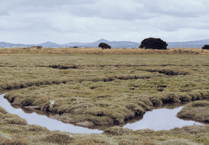DESPITE the recent rainfall, reservoirs and river levels remain low, and the official drought which was declared earlier in the summer is still in place. Participants at the latest National Drought Group (NDG) meeting have set out further action needed now and over winter to mitigate the impacts of drought on next year’s water supplies, agriculture and the environment.
Senior decision makers from the Environment Agency, government, water companies and key representative groups, met last week to discuss the current situation, which still sees most areas across England experiencing drought conditions.
Nearly half of reservoirs were classed as exceptionally low for the time of year in the most recent monthly water situation report for August, with total reservoir stocks at 52 per cent of total capacity on 20 September.
After six months of below average rainfall, very dry soils mean that rainfall will take longer to replenish groundwater and reservoir water levels.
As a result 11 of the Environment Agency’s (EA) 14 areas, including the South West, are still classed as in drought.
Without average rainfall over autumn and winter, it is expected that the drought will continue into 2023.
The group discussed how the tools within the pre-agreed water company drought plans have had a positive effect on demand so far, but the EA expects water companies to continue to take all the necessary actions to mitigate the impact of the drought by implementing their drought plans. This includes applying for drought permits and drought orders where required to increase their water supplies.
One such order is for South West Water which applied for a drought permit to manage the abstraction of water from the Tamar Lakes in Cornwall.
David Dangerfield, EA Director of Water, Land and Biodiversity and chair of the NDG, said: ‘The past summer has been a clear reminder of the need to effectively prepare for weather extremes and how we make the very best use of our water resources.
Our National Framework for Water Resources sets out clearly what we are doing in the face of a new normal for water and we are determined to continue driving that forward.’





Comments
This article has no comments yet. Be the first to leave a comment.